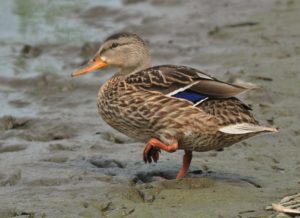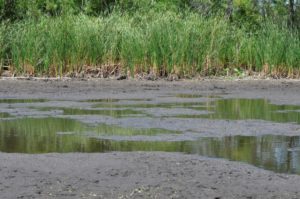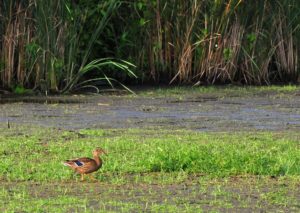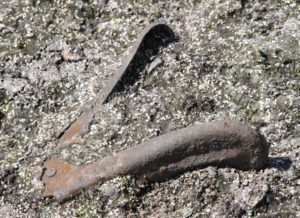Photography courtesy of Lowell Washburn, all rights reserved.
Iowa’s fall waterfowl seasons kickoff September 1st with a special statewide, sixteen-day teal-only hunt. The bonus teal event is followed by a dizzying series of split hunting seasons occurring across the state’s North, Central, and Southern zones. To see what’s going on in your area, check the DNR’s waterfowl hunting regs.
Here today gone tomorrow, migratory waterfowl exist within highly mobile, dynamic populations. The most credible information regarding the status of continental duck and goose numbers has come to hunters via an annual government report detailing the results of widespread pond counts and comprehensive waterfowl breeding surveys. Prepared through the cooperative efforts of the Canadian Wildlife Service and the U.S. Fish & Wildlife Service, the annual assessments have been suspended during the past two years due to COVID 19.
But although state and provincial duck counts have been placed on hold, more is known about spring and summer habitat conditions. A large percentage of North America’s duck populations originate in the prairie wetlands of southern Canada, the Dakotas, and eastern Montana. A critical component of abundant fall duck flights, spring and summer water levels are key to waterfowl production. Unfortunately, most of the prairie pothole region has been plagued by months of drought or near drought conditions. Sparce snow cover resulted in meager spring runoff, providing temporary potholes with low or no water during spring nesting. Production – especially for prairie dependent species like mallards, pintails, shovelers, blue-winged teal, redheads, and canvasbacks – will be negatively impacted. However, with a two-year gap in breeding duck surveys, no one can say to what extent.
In Iowa, current conditions range from abnormally dry to extreme drought across much of the state according to U.S Drought Monitor, Curtis Riganti. In Northern Iowa’s 35-county prairie wetland region, drought conditions vary from severe to extreme, according to the Aug. 19, U.S. Monitor map. Smaller potholes and many of the region’s larger wetlands are dry. Some wetlands are currently reduced to wet mud flats or contain “puddles in the middle” which, although attractive to migrating ducks and shorebirds, will be inaccessible to hunters. By contrast, a handful of larger marshes still contain low, but adequate, water levels. Due to abnormally large watersheds, a limited number of public marshlands remain in near ideal conditions. Recent rainfall [occurring across scattered portions of the pothole region during mid and late August] has assisted in maintaining or raising water levels on some areas. In other words, wetland conditions are all over the chart. Preseason scouting will be key to success.
The obvious question is what can Iowa waterfowlers expect for the upcoming season? At this point, we’ll just have to wait and see. Although habitat conditions on many areas are far from ideal, they can change within hours. A single, well-timed downpour could revitalize local wetland landscapes overnight. We’ve seen it before. The severe droughts of 2011 and 2012 were far worse than the one we’re enduring now.
For those of us sitting smack in the middle of the Mississippi Flyway, there are always plenty of uncertainties. As is the case every year, the ultimate success of the duck season will largely depend on developing fall weather patterns and upon the migratory whims of the birds themselves.
Last item: Since this year’s fall flight is likely to contain an increased percentage of adult [previously educated] birds, hunters might want to put some extra effort into refurbishing the duck blind, touching up the decoys, and practicing their calling. You might also want to adjust your alarm and plan to arrive at your favorite hunting spot a couple of hours early. Unless regional conditions show a dramatic improvement, hunter competition will be keen.





 Tom Cope
Tom Cope Sue Wilkinson
Sue Wilkinson Susan Judkins Josten
Susan Judkins Josten Rudi Roeslein
Rudi Roeslein Elyssa McFarland
Elyssa McFarland Mark Langgin
Mark Langgin Adam Janke
Adam Janke Joe Henry
Joe Henry Kristin Ashenbrenner
Kristin Ashenbrenner Joe Wilkinson
Joe Wilkinson Dr. Tammy Mildenstein
Dr. Tammy Mildenstein Sean McMahon
Sean McMahon